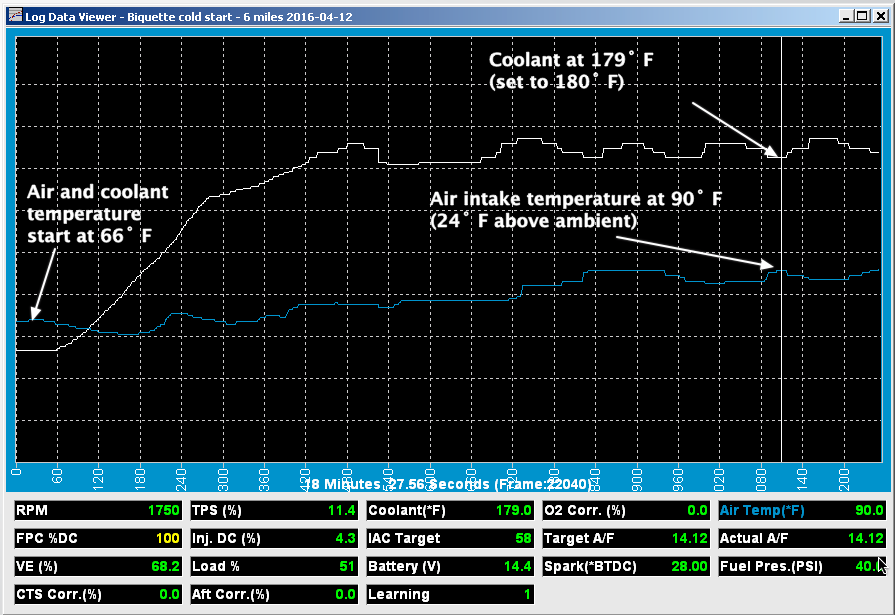Dear mid-60s Buick owners who want your engine to be cool

as well as your car to be
"kewl"! 
Sorry it has been a week of household plumbing mishaps so not much progress on
da' trusty wagon. I did find myself in front of my computer long enough to grab the log I took while driving Biquette around town for about 20 minutes on April 12, 2016. I've used the FAST software to display the coolant and air intake temperatures. Here is what that looks like:

Unfortunately, the software staggers the graph values, so you can compare the temperature values directly.
The coolant and air temperature start out with the car cold at 66 degrees F, so I think that can safely be assumed to be ambient air temperature at the time. It was a cool and foggy day, so that temperature didn't significantly go up the entire drive. The top engine RPM was only about 1800 so I definitely didn't get the engine very warm. Even so, the engine was warm enough to maintain a thermal gradient of 24 degrees above ambient.
That is one of the main reasons I'm a bit concerned about engine bay and air intake temperatures. I do hope to make the Route-66 pilgrimage in some future year - of course in winter! Even so, it isn't unreasonable to run into 90 degrees or more in the deserts in wintertime. When Rich Nedbal did the tuning of Biquette on April 26, 2016, he observed air intake temperatures of over 120 degrees on a day where the high only 66 degrees. If freeway driving can produce 60 degree gradients between the ambient temperature and the air intake temperature, I don't think I want to try to tow a heavy trailer with Biquette's engine trying to inhale 150 degree air!
Cheers, Edouard
